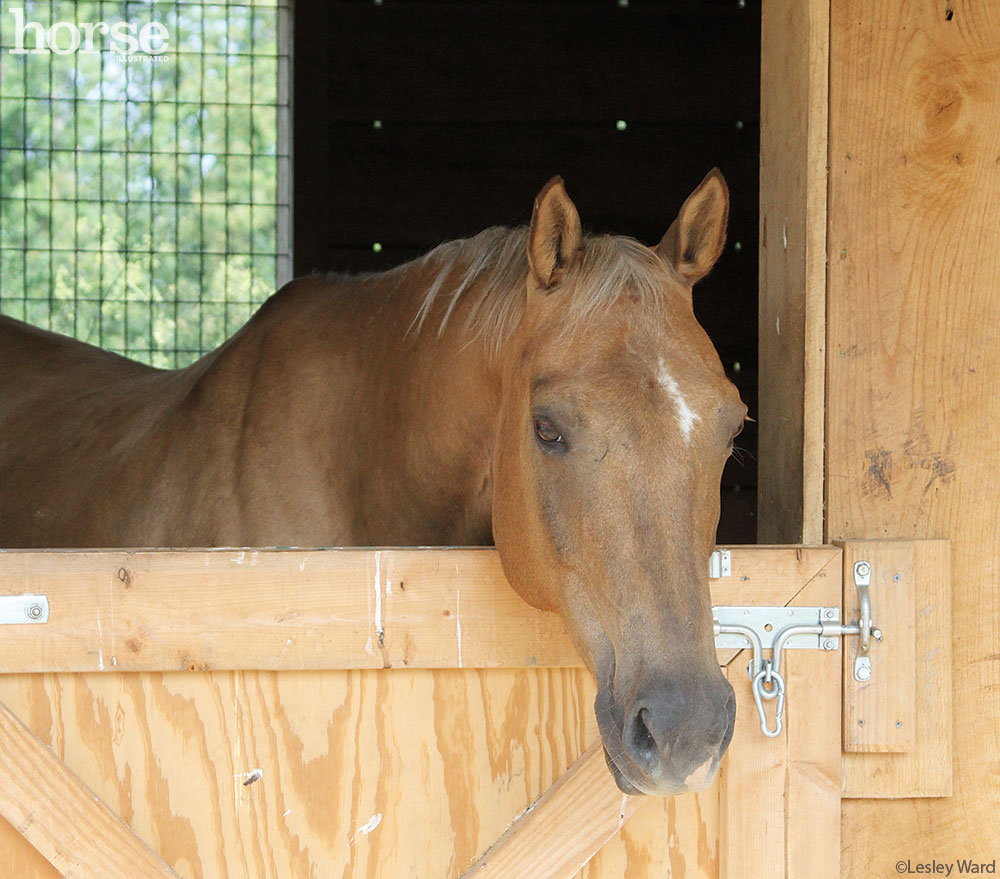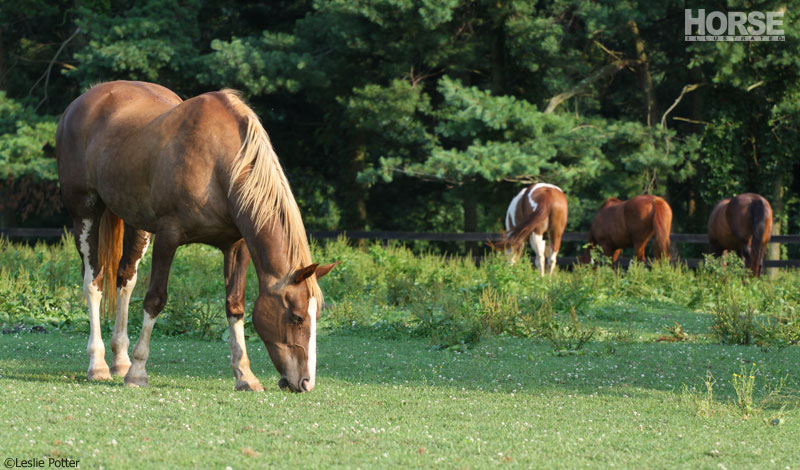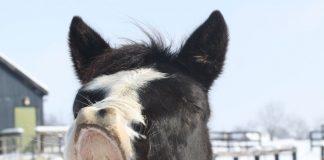A: What a great project! And you’re in good company, as many experts around the world are currently studying colic to try and help reduce the risk of it too. Just to make sure we’re on the same page, colic is simply “abdominal pain” in horses, with an estimated 900,000 horses in the US alone expected to experience an episode each year. In fact, it’s still one of the leading causes of equine death. Our company created a colic risk quiz that outlines some of the factors that can lead to an increased risk, which should be just what your group is looking for:

Exercise
1. Time in a stall
Research shows that an increased number of hours spent in a stall has been associated with increased risk of colic. If possible, gradually increase the amount of turnout and exercise time your horse receives to help decrease his risk.
2. Change in exercise
Research suggests that there is a higher risk of colic in horses that have a significant change in activity. To help lower your horse’s risk, make increases and decreases to your horse’s workload (duration and intensity) slowly.
Diet
3. Hay change
Sudden changes in batch (cutting) or type of hay have been shown to increase the risk of colic by nearly ten times. To help minimize this risk, make hay changes gradually over the course of 7-10 days by blending old and new hay.
4. Coastal bermudagrass hay
Studies show that horses fed bermudagrass hay have an increased likelihood of developing impaction colic. If possible, replace coastal bermudagrass hay with another type to help lower this risk.
5. Round bale
Feeding from hay in round bales is associated with an increased risk of colic. For horses prone to colic, square bales or other types of forage such as chopped hay or hay cubes may be a better choice.
6. More than 5 pounds of grain per day
Research has shown that horses receiving grain have an increased risk of colic. In particular, horses fed more than 5 pounds a day have a 5x greater risk of developing colic. To help lower this risk, grain should be fed at the minimum amount required to maintain weight and performance. For hard keepers who need grain, feeding it over multiple, small meals is recommended.
7. Grain change
Studies indicate that changes in the type of grain your horse receives increase the odds of colic. To help minimize this risk, make any type of grain change gradually over the course of 7 – 10 days.
8. Increase in the amount of grain fed
Research has shown that an increase in the amount of grain your horse receives raises the likelihood of colic. To help minimize this risk, make any type of grain change gradually over the course of 7 – 10 days.

Management
9. Access to grass pasture for grazing
Studies have shown that horses without access to grazing or those with a recent reduction in grazing time were 3 times more likely to colic than horses at pasture full time. To help reduce this risk, provide your horse as much grass turnout as possible.
10. Turned out on sandy soil
Sand colic and impactions are more common when horses graze on pastures with sandy soils. Work with your veterinarian to develop a program that helps limit sand intake and encourage fecal sand clearance.
11. Access to clean, fresh water
Without adequate water intake, horses may be at a greater risk for gastrointestinal trouble, including impaction. Ensure your horse has access to clean, fresh water at all times for optimal health and well-being.
12. How often receive NSAIDs
While sometimes appropriate for a diagnosed medical condition, it is important for horse owners to be aware that NSAIDs can have detrimental effects on both the stomach and the hindgut. Always work with your veterinarian when medicating your horse with a prescription medication like bute or Banamine and use the lowest dose possible to decrease your horse’s risk of GI upset.
13. Parasite control
Research shows that failure to receive appropriate deworming results in an increased likelihood of colic. A sound parasite control program includes fecal egg counts, strategic use of dewormers, as well as conscientious manure and herd management. Work closely with your veterinarian to determine the best deworming protocol for your horse.
History
14. Colic
Horses with a history of previous colic are at a four-fold higher risk for future colic episodes. Work with your veterinarian to develop a comprehensive management plan to help lower his odds of developing colic.
If you want to look up some of these risk factors yourselves, here are the research studies we used. Good luck with your project!
- Cohen, N.D., Factors predisposing to colic, 8th Congress on Equine Medicine and Surgery, 2003.
- Cohen, N.D., Gibbs, P.G., Woods A. Dietary and Other Management Factors Associated with Equine Colic. Proc of the Annu Conv of the AAEP 1999 (45) 96-98.
- White, N.A. Proc of the Annu Conv of the AAEP 2006 (52) 109-175.
- Hudson, J.M., Cohen, N.D., Gibbs, P.G., Thompson, J.A. Feeding practices associated with colic in horses. J Am Vet Med Assoc. 2001 Nov 15;219(10):1419-25.
- Tinker, M. K., White, N. A., Lessard, P., et al. Prospective study of equine colic incidence and mortality. Equine Veterinary J. 1997 Nov;29(6):454-8.







